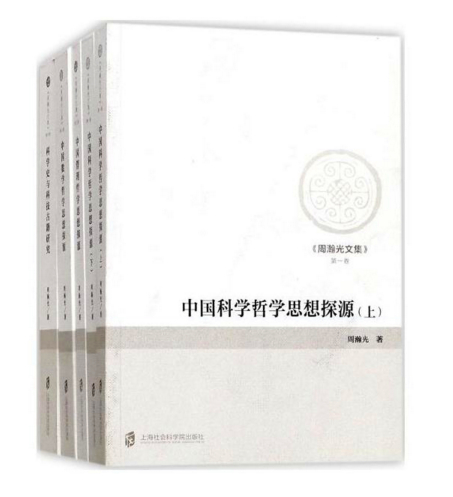A bridge connecting history of philosophy, science

A Collection of Zhou Hanguang’s Works
Author: Zhou Hanguang
Publisher: Shanghai Academy of Social Sciences Press
My acquaintance with Professor Zhou Hanguang dates back to the 1980s, when researchers were particularly concerned about the relationship between ancient Chinese philosophy and the natural sciences. Today, although the relationship between science and philosophy is still considered a “niche” area, more and more scholars have noticed the importance of this area of study. As for Zhou, it has been more than 30 years since he organized the first national conference on the history of scientific thought in 1987.
Now this five-volume A Collection of Zhou Hanguang’s Works is available to the public: the first two volumes are included in the Source of the Chinese Philosophy of Science, the third volume is titled the Source of the Chinese Philosophy of Mathematics, the fourth volume is Source of the Chinese Philosophy of Management and the fifth volume is titled Research on Scientific History and Archives. Looking at the names of these volumes, it is not hard to see that the term “science” runs throughout. It is no wonder, as Zhou said in the foreword, that in the eyes of many academics, he is a historian of science and technology.
Zhou also pointed out in particular that this is only one aspect of his “identity,” and he has another “identity”: a philosophical historian. In this light, he regards himself as an “amphibious person” who walks between the two disciplines—the history of science and the history of philosophy. He has been called an architect who build bridges that connect the two disciplines.
Of all the volumes, I recommend the first three volumes in particular. The chapter in the first volume “Research on Ancient Chinese Scientific Methodology” is the essence of Zhou’s works and is also a pioneering work. It listed the 36 ancient Chinese scientific methods with accuracy and a comprehensive overview.
Other chapters, such as “Confucianism and the Development of Ancient Science and Technology,” “Taoism and the Development of Ancient Science and Technology,” “Chinese Buddhism and the Development of Ancient Science and Technology,” all offer key insights.
The volume Source of the Chinese philosophy of Mathematics is the focus of the collection, including chapters, like “Pre-Qin Mathematics and Philosophy,” “Critical Biography of Liu Hui,” and “Critical Biography of Li Ye,” are also masterpieces. This is because the history of mathematics is Zhou’s specialty. Also, within the studies of the history of Chinese science, the history of Chinese science of thought and studies of the relationship between science and philosophy in ancient China, the philosophy of mathematics has always been a research focus.
In this part, we can see the summary of Liu Hui’s scientific thinking from six aspects including “limits,” “re-inspections” and “reason-seeking;” as well as general summaries of Li Ye’s thoughts on science like “unification of reason and skills,” and “intensive learning comes after extensive learning,” which all reflect Zhou’s insights into the relationship between ancient Chinese mathematical thoughts and its philosophical base.
